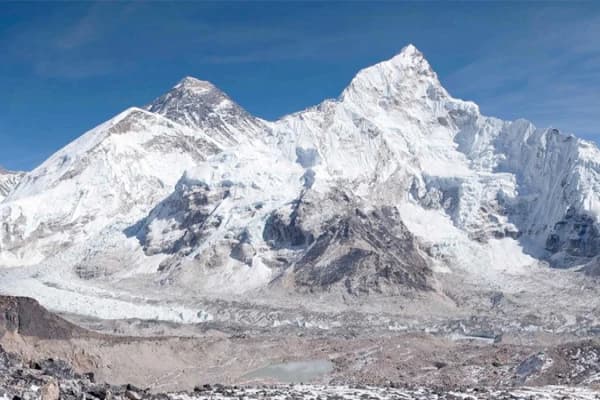The Annapurna Base Camp Trek difficulty can range from moderate to challenging due to numerous factors such as one’s fitness levels, previous experiences with trekking, and weather changes. The trek, though, offers a thrilling adventure with scenic views of the Annapurna ranges. Though this is the case, it is still not a stroll and needs some gearing up.
High-altitude trekking is not dangerous because of mountain sickness but because of steep inclines, changes in elevation, and rocky terrain, which require endurance and stamina. Nevertheless, with sheer willpower and controlled speed, the path remains for expert trekkers and less dangerous for the physically fit.
So, how hard is it to trek to Annapurna Base Camp? It might be strenuous, but the experience is worth it.
Overview of Annapurna Base Camp
Annapurna Base Camp Trek is an adventurous journey offering breathtaking views of the majestic Annapurna Region. The trek consists of unique landscapes and different types of terrain and provides a near encounter with some of the world’s highest peaks. The path leads across green hills, terraced farming, and faraway settlements to the base camp, located at a fantastic elevation.
With Annapurna Base Camp's height at 4,130 meters (13,550 feet) above sea level, it is apparent that the expedition is a fantasy for all the trekkers. The Annapurna Base Camp trek is one of the best treks in Nepal. However, trekkers know that the incredible views of the Annapurna Mountain range, which include the peaks Machapuchare, Hiunchuli, and Annapurna South, that greet everyone at the base camp make every groan of effort put in the long ascent worth every limb ache.
The Annapurna Base Camp trek distance is approximately 110 kilometers, which is (68 miles) roundtrip, which passes through some of the most picturesque sections of the Himalayas.
Various factors determine the Annapurna Base Camp Trek difficulty, and some of them are:
Altitude
The difficulty of the Annapurna Base Camp trek is also influenced by altitude. It reaches 4,130 meters, which is usually above sea level. As elevation increases, the volume of air decreases, thus creating a challenge in terms of breathability. Some with altitude sickness may experience problems; hence, acclimatization is essential.
Elevation
The steep gradients make the journey towards the Annapurna Base Camp challenging. For instance, from Nayapul, about 1,070 meters upwards, trekkers have to climb many gradients until they reach the base camp, which is 4,130 meters. This weighty elevation gain is one of the major factors that add to the difficulty of the Annapurna Base Camp trek.
Best Season
The best time for Annapurna Base Camp Trek is during the spring (March to May) and after the winter towards the autumn (September to November). These two periods have generally stable weather patterns, with clear skies and moderate temperatures.
On the other hand, for a trekker, winter activities may include light trekking, which may be difficult due to deep snow and harsh weather conditions, or summer monsoon break (June to August), when it will be difficult to walk due to wet, muddy, and dangerous creeping terrain.
Difficulty Level
The trek to Annapurna Base Camp is often categorized as medium-range or moderate. Various aspects, such as altitude, terrain, and physical fitness, determine how easy or hard it is.
Long-distance hikers, however, may find the path quite simple. On the other hand, Novice long-distance trekkers would encounter more difficulties, mainly due to the steep inclinations and high elevations. It is essential to understand that this is not only a physical journey, as one has to be psychologically intense. The trek requires one to have a high level of endurance and fitness. The level of training and adaptation done before attempting the most challenging sections of the trek is often a significant factor in determining its success.
How Difficult is the Annapurna Base Camp Trek?
Generally, the Annapurna Base Camp trek is moderate to challenging and, therefore, may be undertaken by many people, although a certain level of fitness and preparation is still required. Each trekker's experience will be different due to their physical fitness, previous hiking experiences, and how well they cope with altitude changes.
Trekking Route to Annapurna Base Camp Trek
The trekking trail to Annapurna Base Camp is an enthralling experience as it leads you through varied terrains, native communities, and breathtaking views of the mountains. Here is the explanation of the standard trekking route:
Nayapul to Tikhedhunga (1,540 meters):
The first leg of the journey is from Nayapul, through a good mix of foliage and terraced fields. Small trails and beautiful sights are along the way to Tikhedhunga.
Tikhedhunga to Ghorepani (2,850 meters):
In the beginning, the step while climbing gets harder due to the number of stone steps. Ghorepani is another common-looking site where most travelers stop, thanks to its views of many mountains, with its top being the Dhaulagiri-Annapurna range.
Ghorepani to Poon Hill (3,210 meters) and back to Ghorepani, then to Tadapani (2,630 meters):
In the early hours of the day, one would hike to Poon Hill for an awe-inspiring view of the rising sun. Upon returning, one walks to Tadapani, where magnificently beautiful rhododendron trees are planted.
Tadapani to Chhomrong (2,170 meters):
The path dips slightly before climbing again to the village of Chhomrong, known for its breathtaking views of Annapurna South Mountain.
Chhomrong to Himalaya (2,920 meters):
As with any good trekking route, this one starts in a dense forest of bamboo and rhododendrons, interspersed with views of the Annapurna Range.
Himalaya to Annapurna Base Camp (4,130 meters):
The trek to base camp includes slow climbing upwards. On the latter side, the panorama of the landscape containing many of the peaks within the Annapurna range is particularly phenomenal.
Annapurna Base Camp to Bamboo (2,500 meters):
When you finish base camp, the walk back to Bamboo is the same route you came.
Bamboo to Jhinu Danda (1,780 meters):
Move down to Jhinu Danda, where hot springs will help heal sore muscles after a long trek.
Jhinu Danda to Nayapul:
Finally, the last long stretch leads you back to Nayapul and completes your trip.
Can a beginner trek to Annapurna Base Camp be done?
Sure! A beginner can attempt and succeed in trekking to Annapurna Base Camp. Here is a broader overview:
- A few months before, engaging in a fitness program, concentrating on aerobic and strength training and conditioning your muscles.
- Study the trek, its routes, and experiences from other trekkers to know what is realistic to expect.
- Take a guided trek because it is worth having experienced guides who care for you and show you the way.
- For the best experience, purchase proper trekking equipment, including nice-fitting boots for hiking, appropriate clothing depending on the weather, and so on.
- Include down days while planning the itinerary to help acclimatize and reduce the chances of getting altitude sickness.
- After several pauses to relish the area's beauty, take a pace that you are comfortable with.
- Accept the difficulties that the trek may present with joy, attending to the experience and not the endpoint only.
- This way, beginners can go to the Annapurna Base Camp trek without fear and take many memories with them!
How Long Does the Trek to Annapurna Base Camp Take?
The length of the Annapurna Base Camp trek usually lasts from seven days to twelve days. The different itineraries, the need for acclimatization, and the individual walking speed occasion this variation. Here’s a breakdown of the typical itinerary:
Day 1: Nayapul to Tikhedhunga – 4 to 5 hours
Day 2: Tikhedhunga to Ghorepani – 6 to 7 hours
Day 3: Ghorepani to Poon Hill (sunrise) and then to Tadapani – 7 to 8 hours
Day 4: Tadapani to Chhomrong – 5 to 6 hours
Day 5: Chhomrong to Himalaya – 6 to 7 hours
Day 6: Himalaya to Annapurna Base Camp – 7 to 8 hours
Day 7: Annapurna Base Camp to Bamboo – 6 to 7 hours
Day 8: Bamboo to Jhinu Danda – 5 to 6 hours
Day 9: Jhinu Danda to Nayapul – 5 to 6 hours
This plan offers trekkers ample opportunity to take in the amazing views while also providing sufficient days for acclimatization.
How to Prepare for the Annapurna Base Camp Trek?
Conclusively, one can only go on the Annapurna Base Camp trek without making the necessary preparations. Below are some of the essential steps for preparing.
- Regular cardiovascular and strength training to build stamina and leg muscle workouts.
- Take part in local hikes with different terrains to enhance your hiking skills and mimic the trekking activity.
- Get some good trekking gear, such as a waterproof jacket, shoes, and a bag.
- Understand the effects of altitude and include acclimatization days in your schedule.
- For acclimatization, you must understand the trek details and make a rough calendar of the activities, including the rest.
- Understand prevention methods for altitude sickness and incorporate water in the daily task schedule.
- Buy travel insurance that includes trekking and covers medical costs in case a need arises, as this mitigates any risks involved in the trip.
- Nurture reasonable expectance and mental strength in preparation for the challenges experienced while trekking at high altitudes.
- You must have the necessary permits for the Manaslu circuit trek, which can usually be obtained with the assistance of your guide or trekking agency.
- Trek preparation should be taken to the fullest to increase the success rate on the chosen route to the Annapurna Base Camp.
Is the Guide Mandatory for the ABC Trekking?
Though using a guide for the Annapurna Base Camp trek is not compulsory, it is advisable for first-timers. A guide provides excellent navigation skills, helps with local hazards to keep you and yourself safe in case something goes wrong, and keeps you going in the right direction. They also assist in locating rest stops and food along the way, take care of the required documentation, and help one appreciate the people and nature present in the area.
How Hard is Annapurna Base Camp Trek for Solo Adventurers and Beginners?
Out of all the regions in Nepal that make a good trekking destination, Annapurna Base Camp ranks among the most remarkable for only capable solo adventurers and beginners. It is far from impossible, meaning doing it oneself but with necessary prior dos and don’ts while being out.
For novices, that might be tough, but it is achievable if appropriate measures are taken, such as training, preparation, studying, and picking the proper trek that allows patience. Usually, joining a group or hiring a guide to resolve these issues is better, as guides know the area.
To conclude, it is worth noting that with sufficient preparation and a good attitude, even those who want to go alone and beginners can experience and appreciate the ever-stunning Annapurna Base Camp trek and cherish its remarkable moments.
Plan Annapurna Base Camp Trek with Real Adventure
Are you prepared to embark on an adventure in the beautiful Annapurna region? With the best season to travel to Annapurna Base Camp drawing closer, it is time to prepare for the adventure of a lifetime! Whether you are arranging a complete trekking package or are interested in the best time to trail to Annapurna Base Camp, we are ready to help.
AtReal Adventure, our professional guides make every effort to ensure you have the right plan and backup for increased chances of success while trekking at Annapurna Base Camp. We will also guide you on the best times to trek in the region, whether the beautiful spring flowers or the breathtaking autumn views.
You can customize your trek with us and take advantage of the beautiful offers available during the best trekking seasons. Such an extraordinary adventure is waiting for you!
Explore our Annapurna Region Packages
Annapurna Panorama Trek - 6 Days
Ghorepani, Poon Hill, and Mardi Himal Trek - 11 Days
Ghorepani Poon Hill Trek - 6 Days
Annapurna Circuit and Base Camp Trek - 18 Days
Annapurna Circuit with Tilicho Lake Trek- 14 Days
Annapurna Luxury Lodge Trek with Chitwan Wildlife Tour - 13 Days
FAQs
How long is the trek to Annapurna Base Camp?
The trek to Annapurna Base Camp typically takes about 7 to 12 days, depending on your itinerary and pace.
How difficult is the Annapurna Base Camp Trek?
The Annapurna Base Camp trek difficulty varies, but it’s generally considered moderate to challenging, mainly due to altitude and terrain.
How much does it cost to trek to Annapurna Base Camp?
You should expect to budget between $800 and $1,500, depending on your choice of guide, accommodations, and personal expenses.
Is Annapurna Base Camp harder than Everest?
While both treks are challenging, the Annapurna Base Camp trek is often considered more accessible than theEverest Base Camp trek, making it slightly easier for most trekkers.
Which month is best for Annapurna Base Camp?
When weather conditions are ideal, the best months to trek to Annapurna Base Camp are March to May (spring) and September to November (autumn).
Can a beginner climb Annapurna?
Yes, beginners can trek to Annapurna Base Camp with proper preparation, physical fitness, and possibly a guide to assist along the way.
Is it safe to trek to Annapurna Base Camp?
Generally, trekking to Annapurna Base Camp is safe, especially if you’re mindful of altitude sickness and travel with a guide or group.
Which is better, Annapurna Circuit or Base Camp?
Both treks offer unique experiences. The Annapurna Circuit is longer and more diverse in landscapes, while the Base Camp trek is more direct and provides stunning views of the Annapurna range.
What should I wear to Annapurna Base Camp?
Wear layered clothing, including moisture-wicking base layers, warm mid-layers, a waterproof jacket, and sturdy trekking boots to ensure comfort and protection from the elements.
Is Annapurna Base Camp worth it?
Absolutely! The trek offers breathtaking views, diverse landscapes, and a rich cultural experience, making it a must-do for trekking enthusiasts.
Why is Annapurna Base Camp famous?
Annapurna Base Camp is famous for its stunning views of the Annapurna mountain range, the unique cultural experiences of the local Gurung and Magar communities, and its challenging yet rewarding trekking routes.



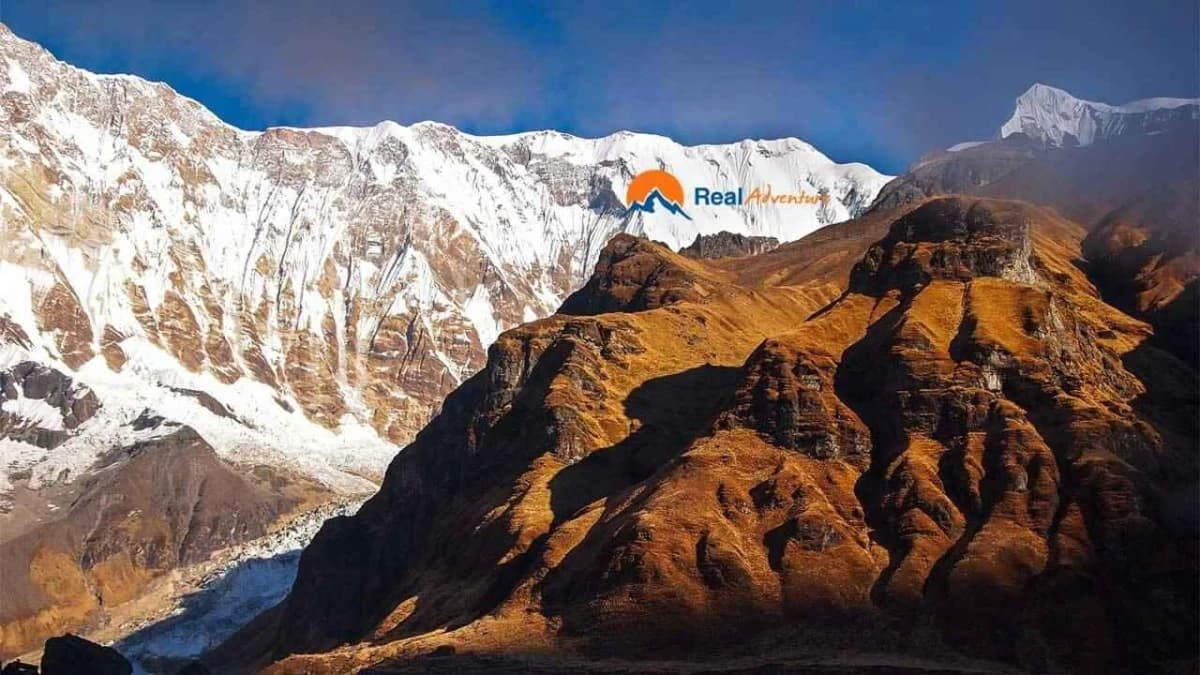
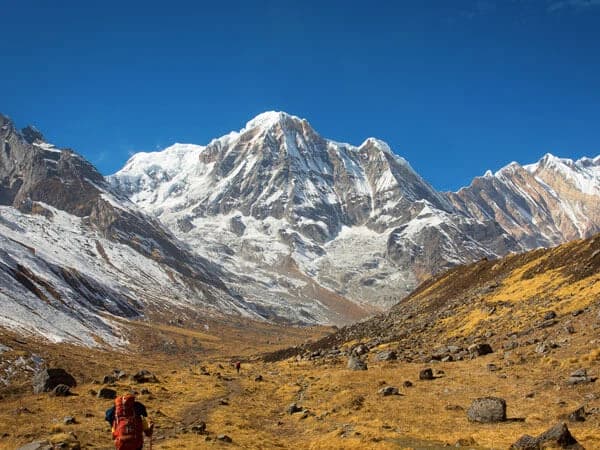


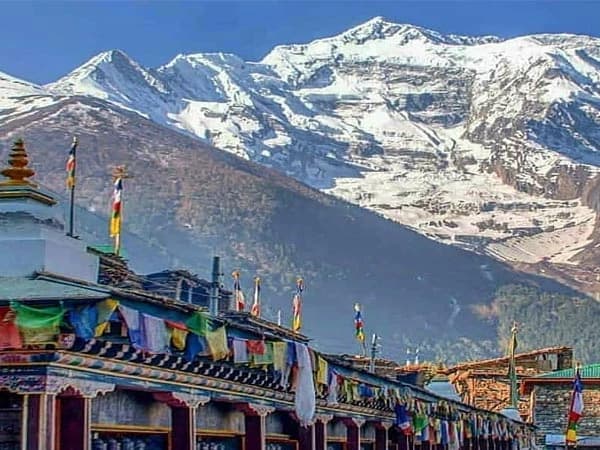
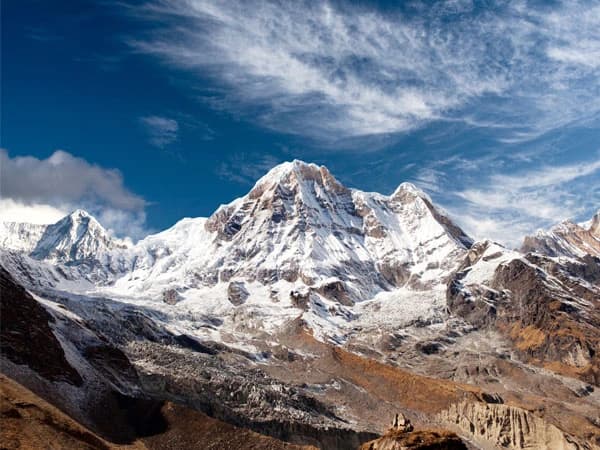

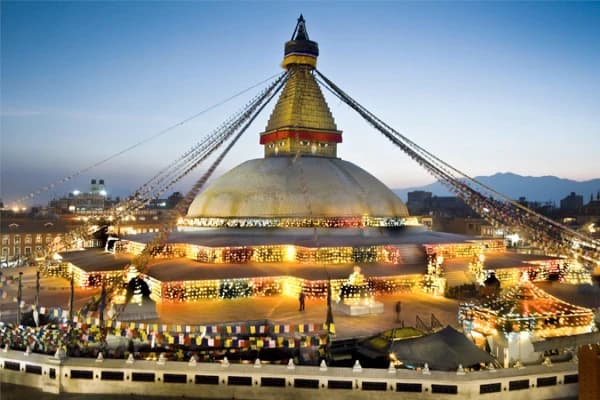
-(5).webp&w=1200&q=75&dpl=dpl_CtNAyRzUAwPdWKDCFxYk5p2VryPh)
